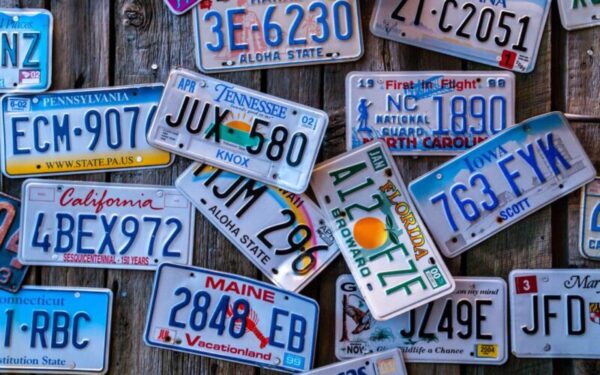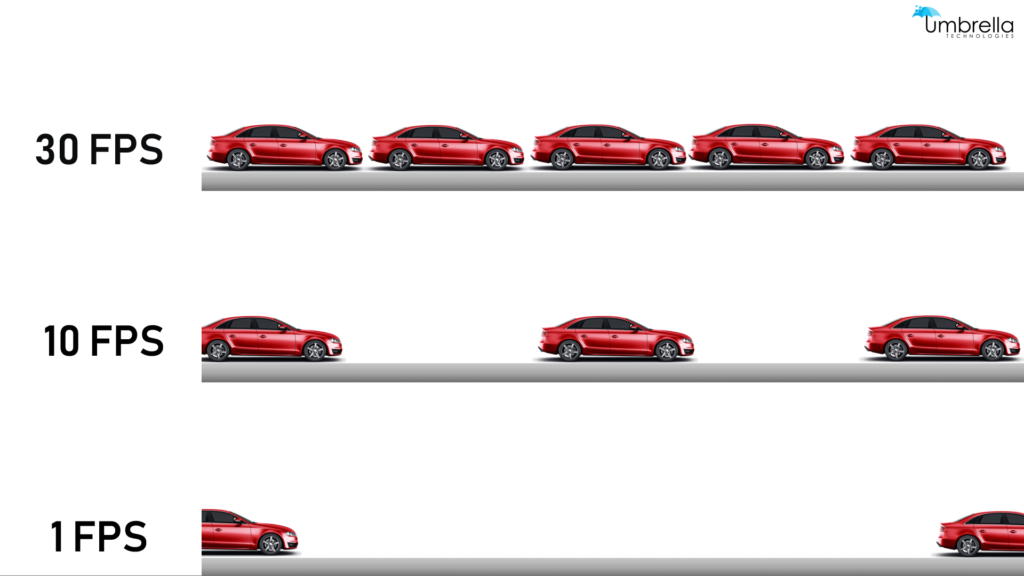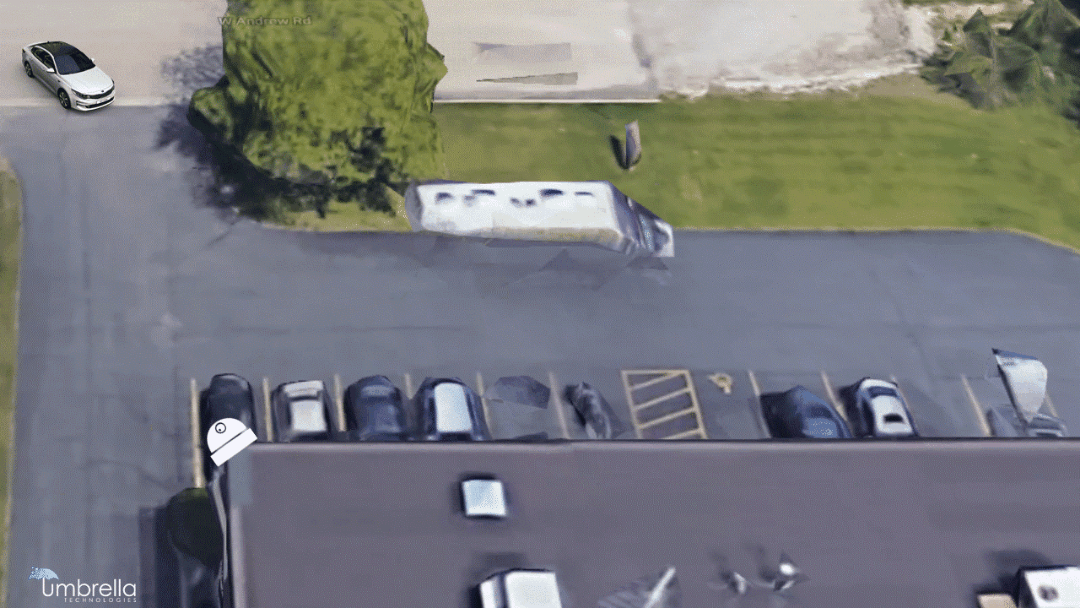In the process of designing video surveillance systems – a video surveillance installer often hears clients request license plate camera recognition at their front entrance, but what they usually mean is license plate capturing. License plate camera capturing is the process of recording an image of a license plate. In contrast, license plate recognition uses that image to identify and search for the plate in a database. License plate recognition is generally intended to associate a vehicle with a person, especially by law enforcement and private security agencies.
The below discussion outlines the differences between the two applications and the key factors determining each method’s success. Watch the short video below or continue reading.
License Plate Capturing
The use of a security camera to capture a license plate requires you to consider both the camera’s capabilities and its environment. Additionally, access control installer teams often integrate this technology with entry systems for enhanced perimeter security. Each environment is unique, so there is no one-size-fits-all license plate recognition camera. In particular, a megapixel license plate camera solution should be dedicated to that task due to the specialized nature of this application. The key technical elements a video surveillance consultant uses to capture a license plate with a camera include:
- Frames per second
- Image quality
- Lighting
- Image stabilization
- Exposure time
- Angle
- Speed
Frames per Second
The speed at which a camera takes pictures is usually measured in frames per second (fps). The higher the frame rate, the more likely it is that you will be able to capture a license plate from a moving car. However, the frame rate is inversely proportional to resolution, meaning that increasing the camera’s frame rate reduces the image resolution. The frame rates of cameras used for capturing license plates are typically between 30 and 60 fps.
License Capturing Image Quality
Pixel density primarily determines a camera’s image quality or resolution. Resolution is typically measured in pixels per foot (ppf) or pixels per meter (ppm). An image processing software will have a specific resolution requirement, but human readers are much more subjective. A high-resolution surveillance camera used for license plate cameras typically has a pixel density of at least 60 ppf or 110 ppm. These systems may also be integrated with key card access systems to manage vehicular entry for authorized personnel.
Lighting
A camera requires a longer exposure time to compensate for poor lighting, resulting in a reduction of frame rate. In particular, the lighting for license plate capturing increases the challenge of capturing license plates at night. The most common solution to surveillance camera lighting is positioning the camera so it is not facing directly into a light source, which usually means it’s placed between 10 and 15 feet above the ground. A housing with a high-contrast filter is another option for handling glare at night.
Image Stabilization
Image stabilization is a collective term for techniques that reduce the blur caused by a camera taking a picture while moving relative to the subject. These techniques primarily compensate for pan and tilt, although some cameras also compensate for rotation. Image stabilization is critical with long exposure times and when using lenses with long focal lengths, such as telephoto and zoom lenses.
Exposure Time
A longer exposure time, or shutter speed, increases motion blur and reduces the camera’s light requirements. A camera at a high-speed location, such as a through the street, will typically need a shutter speed no longer than two milliseconds. On the other hand, a camera covering a location with slow-moving vehicles, like a gate or parking lot entrance, may have a shutter speed as long as four milliseconds.
Angle of Image
The license plate camera should be positioned so that its line of sight is perpendicular to the license plate surface under ideal circumstances. However, conditions such as glare may require the camera’s line of sight to be at a more shallow and skewed angle to the license plate. In these cases, a longer focal length and greater distance from the license plate can minimize the effects of a skewed angle.
Speed of Capturing a License Plate Picture
A vehicle’s speed has a direct effect on the challenge of capturing a license plate. A higher speed requires a higher frame rate to record an image with the vehicle in the proper position. However, a faster shutter speed will need more light.
License Plate Recognition
License plate recognition is also known by many other names, including license plate recognition (LPR) and automatic license plate recognition (ALPR) in the United States. It includes the processing needed to extract the license plate’s alphanumeric value, relying on a series of algorithms. ALPR software will then compare this value to the license plates stored in a database. Database-driven ALPR systems may be classified into stand-alone systems and systems integrated with third-party video management software.
License Plate Recognition Algorithms
LPR systems currently use the following seven types of algorithms to identify a license plate number:
- Plate localization
- Plate orientation and sizing
- Normalization
- Character segmentation
- Optical character recognition
- Syntactical and geometrical analysis
- Averaging
Plate localization algorithms identify the license plate in a given image and isolate it from the rest of the photo. Plate orientation and sizing algorithms compensate for a skewed image and adjust for its size. Normalization is the process of adjusting the image’s brightness and contrast, while character segmentation algorithms identify the individual characters on the plate. Optical character recognition (OCR) is the conversion of printed text to encoded text. It was initially used for encoding documents, but OCR algorithms have since been specifically designed for license plate recognition.
The syntactical and geometrical analysis involves using country-specific rules to identify characters and their positions within the license plate number. Recognized values may also need to be averaged over multiple images to increase the confidence of identification. This algorithm is essential for license plate recognition as the images frequently contain reflected light and partial obstructions.
Standalone License Plate ALPR Systems
Standalone LPR systems perform the entire recognition process on-site, in real-time, and typically within a fraction of a second. This process includes capturing the license plate image and recording associated information, such as lane identification and date/time. A standalone LPR system can store this data on-site or transmit it to a different computer off-site for additional processing.
Integration with Software
An ALPR system can be integrated with third-party software that isn’t made by either the system’s manufacturer or its servers. These systems will transmit images to a remote location as they’re recorded, allowing the software to process the images further. ALPR software usually runs on standard personal computers (PCs) and can be linked to databases and other applications. This arrangement typically uses a server farm containing many PCs, allowing the ALPR system to handle high workloads. The need to continually transmit images to a remote server also requires the transmission media to have high bandwidth.
Best Camera for License Plate Capture & License Plate Recognition
The nature of license plate capture and recognition systems means they need to work right every time. Choosing the right camera and video surveillance installation company can be a crucial decision, especially when you’re looking for a license plate capture technology or recognition system. A security camera installer should select each camera for the specific application and environment due to the unique challenges of capturing and recognizing license plates from moving vehicles. A security company also needs to set the shutter speed correctly, as there is often a narrow gap between a shutter speed that can make an image too dark and one that can make it too blurry. Contact the video surveillance experts at Umbrella Security Systems for a free consultation on the best license plate capturing camera for your needs.




